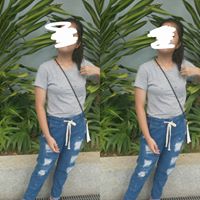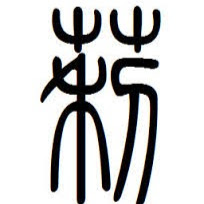Li Hong Wang
age ~57
from Las Vegas, NV
- Also known as:
-
- Li H Wang
- Lihong Wang
- Lihon Wang
- Limong Wang
- Lihong Want
- Hong Wang Li
- Li H Chen
- E Wang
Li Wang Phones & Addresses
- Las Vegas, NV
- San Jose, CA
- Union City, CA
- Fremont, CA
- Tracy, CA
Us Patents
-
Energy Filtered Focused Ion Beam Column
view source -
US Patent:6410924, Jun 25, 2002
-
Filed:Nov 16, 1999
-
Appl. No.:09/440985
-
Inventors:Li Wang - San Jose CA
-
Assignee:Schlumberger Technologies, Inc. - San Jose CA
-
International Classification:H01J 4948
-
US Classification:250398, 250305
-
Abstract:The resolution of a charged particle beam, such as a focused ion beam (FIB), is optimized by providing an energy filter in the ion beam stream. The energy filter permits ions having a desired energy range to pass while dispersing and filtering out any ions outside the desired energy range. By reducing the energy spread of the ion beam, the chromatic aberration of the ion beam is reduced. Consequently, the current density of the ion beam is increased. The energy filter may be, e. g. , a Wien type filter that is optimized as an energy filter as opposed to a mass filter. For example, to achieve useful dispersion the energy filter may use a quadrupole structure between two magnetic pole pieces thereby producing a combined quadrupole electric field and dipole electric field within a magnetic field.
-
Asymmetrical Sleeve For Fiber Optical Collimators And Method Therefor
view source -
US Patent:6481901, Nov 19, 2002
-
Filed:Aug 2, 2001
-
Appl. No.:09/922323
-
Inventors:Li Wang - San Jose CA
Timothy Yuen-Lian Wang - San Jose CA -
Assignee:Alliance Fiber Optic Products, Inc. - Sunnyvale CA
-
International Classification:G02B 636
-
US Classification:385 79
-
Abstract:Improved designs of fiber collimators that include an asymmetric sleeve are disclosed. According to one embodiment of the present invention, the asymmetric sleeve is so shaped that, when arranged next to each other, two collimators with the asymmetric sleeve achieves a lateral distance shorter than the outer diameter of the collimators, which makes it possible to design smaller optical components without effecting the performance and characteristics thereof.
-
Compact Polarization Couplers
view source -
US Patent:6560378, May 6, 2003
-
Filed:Aug 2, 2001
-
Appl. No.:09/921791
-
Inventors:Weimin Liu - Sunnyvale CA
Li Wang - San Jose CA -
Assignee:Alliance Fiber Optic Products, Inc. - Sunnyvale CA
-
International Classification:G02B 600
-
US Classification:385 11, 354483, 354494, 385 33, 385 34
-
Abstract:The present invention, generally speaking, provides compact design of optical couplers for combining two differently polarized light beams onto a collimator or splitting a composed light beam into two differently polarized light beams. According to another embodiment, the size of the polarization beam combiner is minimized by using a pair of specially designed fiber collimators that use an asymmetrical sleeve. As a result, a coupler, according to the present invention, uses less components, is of small in size and provides an easy-aligning structure. Further the coupler offers lower optical insertion loss with minimized physical size.
-
Compact, High Collection Efficiency Scintillator For Secondary Electron Detection
view source -
US Patent:6630667, Oct 7, 2003
-
Filed:Sep 29, 2000
-
Appl. No.:09/675981
-
Inventors:Li Wang - San Jose CA
Timothy Michael Montagne - Fremont CA
Sergey Etchin - Cupertino CA
Subramanian V. Sankar - Fremont CA -
Assignee:NPTest, LLC - San Jose CA
-
International Classification:G01N 2300
-
US Classification:250310, 250306, 250309
-
Abstract:A scintillator assembly used in a FIB (Focused Ion Beam) system to detect secondary electrons achieves nearly 100 percent collection efficiency for the majority of useful secondary electron energy ranges. Further, the insulator in the assembly is placed such that it is completely out of the secondary electron path in order to avoid arcing which affects FIB secondary electron imaging. Also, the gap between the grounding cap and the scintillator allows high collection efficiency offered by earlier designs to be retained, and at the same time, improves the system reliability. Further, the scintillator assembly may be placed closer to the primary ion beam, which further improves collection efficiency.
-
Method For Bonding Two Optical Parts And Apparatus Thereof
view source -
US Patent:6678459, Jan 13, 2004
-
Filed:Oct 29, 2001
-
Appl. No.:10/046445
-
Inventors:Li Wang - San Jose CA
Bright An - Mountain View CA
Yi-ping Loh - San Jose CA
Timothy Yuen-Lian Wang - San Jose CA -
Assignee:Alliance Fiber Optic Products, Inc. - Sunnyvale CA
-
International Classification:G02B 626
-
US Classification:385147, 385 39
-
Abstract:A method for bonding two or more optical parts and an optical apparatus of using the method are disclosed. According to one embodiment, two optical fiber segments are used as a spacer between two optical parts. The optical fiber segments may be cut off from a commonly used optical fiber according to the size of the parts. In general, the diameter of the optical fiber segments is small, the capillary effect for commonly used adhesives can be eliminated when the two optical parts are bonded with the optical fiber segments in between.
-
Method For Bonding Aligned Optical Parts And Apparatus Thereof
view source -
US Patent:6792183, Sep 14, 2004
-
Filed:Nov 16, 2001
-
Appl. No.:09/990487
-
Inventors:Yuqiao Liu - Sunnyvale CA
Li Wang - San Jose CA
Zhupei Shi - San Jose CA
Wei-Shin Tsay - Saratoga CA -
Assignee:Alliance Fiber Optic Products, Inc. - Sunnyvale CA
-
International Classification:G02B 626
-
US Classification:385 52, 385 49, 385136, 385137
-
Abstract:Techniques for bonding aligned optical parts to a substrate are disclosed. According to one embodiment, one or more wedges are used to fill in gaps between aligned optical parts and a substrate. Using an appropriate material, the wedges are respectively slid in till respective contacts between the aligned optical parts and the wedges are established, a small amount of a bonding agent is then only applied to the respect contacts. As a result, the shrinkage that may be caused by the bonding agent to destabilize the aligned optical parts is minimized and the alignments among the optical parts are preserved and can sustain under very high environmental stresses.
-
Fiber Optical Circulator
view source -
US Patent:6914722, Jul 5, 2005
-
Filed:Mar 12, 2002
-
Appl. No.:10/096380
-
Inventors:Li Wang - San Jose CA, US
Jerry Lee - Saratoga CA, US
Tim Wang - San Jose CA, US -
Assignee:Alliance Fiber Optic Products, Inc. - Sunnyvale CA
-
International Classification:G02B027/28
G02B006/27 -
US Classification:359497, 359494, 385 11
-
Abstract:A fiber optical circulator includes a first collimator and a second collimator sandwiching a circulator core therebetween. The first collimator and the second collimator respectively define Port and Port thereof, and the first collimator further defines Port thereof. The circulator core includes a first crystal and a second crystal at two ends respectively confronting the first collimator and the second collimator aside. The circulator core further includes a first group of two half-wavelength waveplates and a first Faraday rotator, and second subassembly a second group of two half-wavelength waveplates and a second Faraday rotator. A third crystal is disposed between the first subassembly and the second subassembly wherein a backward light path from Port to Port passes the third crystal and is deflected by the third crystal toward the first collimator though total internal reflection.
-
Tunable Wavelength Filter With Invariant Transmission And Reflection Beam Angles
view source -
US Patent:6943938, Sep 13, 2005
-
Filed:May 10, 2002
-
Appl. No.:10/144596
-
Inventors:Yuqiao Liu - Sunnyvale CA, US
Li Wang - San Jose CA, US
Wei-Shin Tsay - Saratoga CA, US -
Assignee:Alliance Fiber Optic Products, Inc. - Sunnyvale CA
-
International Classification:H01S003/00
G02B006/42
H04J014/02 -
US Classification:3593372, 385 18, 398 82, 398 85
-
Abstract:Improved designs of optical devices for processing optical signals with own or more specified wavelengths are disclosed. According to embodiment, a filter mirror assembly appears an “L” shape and provides a filtering function as well as a reflecting function. The filter mirror assembly is so mounted that a rotation thereof will not alter the optical path the beam positions of signals resulted from the filter mirror assembly.
Lawyers & Attorneys
Medicine Doctors

Li Wang
view sourceSpecialties:
Family Medicine
Work:
Swedish Medical GroupSwedish Physicians Pine Lake Clinic
22707 SE 29 St BLDG C, Sammamish, WA 98075
425 455-2845 (phone), 206 861-8602 (fax)
22707 SE 29 St BLDG C, Sammamish, WA 98075
425 455-2845 (phone), 206 861-8602 (fax)
Education:
Medical School
Shanghai Second Med Univ, Shanghai City, Shanghai, China
Graduated: 1993
Shanghai Second Med Univ, Shanghai City, Shanghai, China
Graduated: 1993
Procedures:
Arthrocentesis
Destruction of Benign/Premalignant Skin Lesions
Electrocardiogram (EKG or ECG)
Skin Tags Removal
Vaccine Administration
Wound Care
Destruction of Benign/Premalignant Skin Lesions
Electrocardiogram (EKG or ECG)
Skin Tags Removal
Vaccine Administration
Wound Care
Conditions:
Abdominal Hernia
Abnormal Vaginal Bleeding
Acne
Acute Bronchitis
Acute Conjunctivitis
Abnormal Vaginal Bleeding
Acne
Acute Bronchitis
Acute Conjunctivitis
Languages:
English
Description:
Dr. Wang graduated from the Shanghai Second Med Univ, Shanghai City, Shanghai, China in 1993. She works in Sammamish, WA and specializes in Family Medicine. Dr. Wang is affiliated with Swedish Medical Center - First Hill.

Li Wang
view sourceSpecialties:
Family Medicine
Description:
Ms. Wang works in Trenton, FL and specializes in Family Medicine.

Li Juan Wang
view sourceSpecialties:
Pathology
Anatomic Pathology
Anatomic Pathology & Clinical Pathology
Anatomic Pathology
Anatomic Pathology & Clinical Pathology
Education:
Beijing School Of Medicine
Name / Title
Company / Classification
Phones & Addresses
President
Wangliho Corp
Business Services at Non-Commercial Site
Business Services at Non-Commercial Site
101 Durlington Ct, San Ramon, CA 94582
President
WEST COAST DESIGN STUDIO GROUP, INC
11740 Dublin Blvd STE 205, Dublin, CA 94568
President
WANG & LI, INC
2316 Lucretia Ave APT 4, San Jose, CA 95122
President
LI JEN WANG CHARITY FOUNDATION
Civic/Social Association
Civic/Social Association
358 Vw St, Mountain View, CA 94041
473 Hope St, Mountain View, CA 94041
473 Hope St, Mountain View, CA 94041
President
HORN ELECTRONICS, INC
2570 N 1 St SUITE 200, San Jose, CA 95131
President
LI-WANG REALTOR, INC
Real Estate Agent/Manager
Real Estate Agent/Manager
734 Hebrides Way, Sunnyvale, CA 94087
19546 Miller Ct, Saratoga, CA 95070
19546 Miller Ct, Saratoga, CA 95070
Partner
Foothill Mobil Lodge
Mobile Home Site Operator
Mobile Home Site Operator
473 Hope St, Mountain View, CA 94041
650 969-4860
650 969-4860
Director
Eastnet Media Inc
PO Box 2106, Cupertino, CA 95015
867 Southern Shr Dr, Peachtree City, GA 30269
867 Southern Shr Dr, Peachtree City, GA 30269
Isbn (Books And Publications)
-
Wu Xia Wen Hua Tong Lun
view source -
Author:Li Wang
-
ISBN #:7010045593
-
Zhongguo Yu Yan Xue Shi: Zhong Guo Yu Yan Xue Shi
view source -
Author:Li Wang
-
ISBN #:7309047214
-
Chang Jiang Liu Yu Li Shi Di Zhi Shu Mu Ti Yao: Changjing Liuyu Lishi Dizhi Shumu Yiyao
view source -
Author:Li Wang
-
ISBN #:7535227961
License Records
Li Wang
License #:
0225213326
Category:
Real Estate Individual
Li Wang
License #:
3410 - Active
Category:
Massage Therapy
Issued Date:
May 4, 2016
Effective Date:
May 4, 2016
Expiration Date:
Nov 1, 2017
Type:
Massage Therapist
Resumes

Li Wang Mission, KS
view sourceWork:
Accelerated Vision Group LLC
Overland Park, KS
Feb 2014 to Aug 2014
Data Analyst Futurewei Technologies, INC
Santa Clara, CA
Jan 2013 to Jun 2013
Software Developer
Overland Park, KS
Feb 2014 to Aug 2014
Data Analyst Futurewei Technologies, INC
Santa Clara, CA
Jan 2013 to Jun 2013
Software Developer
Education:
University of Missouri Kansas City
Kansas City, MO
2010 to 2014
MS in Computer Science Wuhan Textile University
Kansas City, MO
2006 to 2010
BS in Computer Science
Kansas City, MO
2010 to 2014
MS in Computer Science Wuhan Textile University
Kansas City, MO
2006 to 2010
BS in Computer Science
Skills:
Java, C++, Data Mining, Big Data, Hadoop, Mahout Machine Learning Algorithm, SQL, MongoDB
Vehicle Records
-
Li Wang
view source -
Address:4437 Sirius Ave, Las Vegas, NV 89102
-
VIN:1HGFA16547L064309
-
Make:HONDA
-
Model:CIVIC
-
Year:2007

Li Ling Wang
view source
Li Rong Wang
view source
Li Ting Wang
view source
Li Qiong Wang
view source
Li Kwan Wang
view source
Li Wang
view source
Adia Li Wang
view source
Li Hsuan Wang
view sourceYoutube
Myspace
Classmates

Li Wang
view sourceSchools:
Loyola Academy Chicago IL 1992-1996
Community:
Paul Hanna, Paul Werner, Henry Melton

Li Wang
view sourceSchools:
Oregon Episcopal High School Portland OR 2000-2004
Community:
Margot Feves, William Meade, D Verk, Meg Clark, Michael Chiang, Whitney Alexander, Jenny Philips, Bunron Chen, Ryan Lee, Alexander Polstra

Great Neck South Middle S...
view sourceGraduates:
Marg LI (2001-2005),
LI Wang (1999-2000),
Shaneiqua Williams (1989-1990),
Jeremy Ancelson (1999-2003)
LI Wang (1999-2000),
Shaneiqua Williams (1989-1990),
Jeremy Ancelson (1999-2003)

Queens Central High Schoo...
view sourceGraduates:
LI Wang (1989-1993),
Charles Gassler (1990-1994),
Mei Cheng (1981-1985),
Logan Hurley (1997-2001),
Lindsay Wortzman (1978-1982)
Charles Gassler (1990-1994),
Mei Cheng (1981-1985),
Logan Hurley (1997-2001),
Lindsay Wortzman (1978-1982)

Academy of Aeronautics, N...
view sourceGraduates:
August Hunter (1987-1988),
LI Wang (1971-1978),
Richard McKay (1964-1969),
Charles Poidomani (1945-1948)
LI Wang (1971-1978),
Richard McKay (1964-1969),
Charles Poidomani (1945-1948)

University of Hartford - ...
view sourceGraduates:
LI Wang (1980-1984),
Dexter Eddy (1957-1960),
John Degennaro (1982-1983),
Joseph Goslawski (1971-1974),
Jeff Chausse (1993-1995)
Dexter Eddy (1957-1960),
John Degennaro (1982-1983),
Joseph Goslawski (1971-1974),
Jeff Chausse (1993-1995)

Oregon Episcopal High Sch...
view sourceGraduates:
Steve Wang (1982-1986),
Christine Hilderbrand (1994-1998),
Li Wang (2000-2004),
Nathan Spencer (1995-1999),
Shawn Brateng (1977-1978)
Christine Hilderbrand (1994-1998),
Li Wang (2000-2004),
Nathan Spencer (1995-1999),
Shawn Brateng (1977-1978)

JLS Middle School, Palo a...
view sourceGraduates:
Li Wang (1997-2001),
Amanda Prather (1994-1997),
John Jacob (1985-1987),
Vadim Bukchin (1999-2001),
Josh Alper (1985-1987),
Christopher Adams (1997-2000)
Amanda Prather (1994-1997),
John Jacob (1985-1987),
Vadim Bukchin (1999-2001),
Josh Alper (1985-1987),
Christopher Adams (1997-2000)
Plaxo

Li Wang
view source
Li Wang
view sourceTokyoPV auditor at Eisai Co Past: Research Associate at Peking University

Li Wang (Wang, LI)
view source150 North Orange Grove Blve., Pasadena, CA 91103

Wang Li
view sourceSEu

Wang, Li
view sourceChina

li wang
view sourceSiemens
Flickr
Googleplus

Li Wang
Education:
Chinese acadamic of science, Queen's University - Environmental science
About:
80后 非常坚持的幼稚 爱音乐 爱旅游 爱看书
Tagline:
Remember that you are going to die is the best way i know to avoid the trap of thinking you have something to lose
Bragging Rights:
毕业啦,又想失业啦~

Li Wang
Education:
University of New Brunswick - Computer Science
About:
Li Wang lives in Vienna, VA

Li Wang

Li Wang
Education:
Tennessee state university - Agriculture

Li Wang
Lived:
San Jose CA

Li Wang
Education:
Cornell University

Li Wang
Work:
School

Li Wang
Get Report for Li Hong Wang from Las Vegas, NV, age ~57























